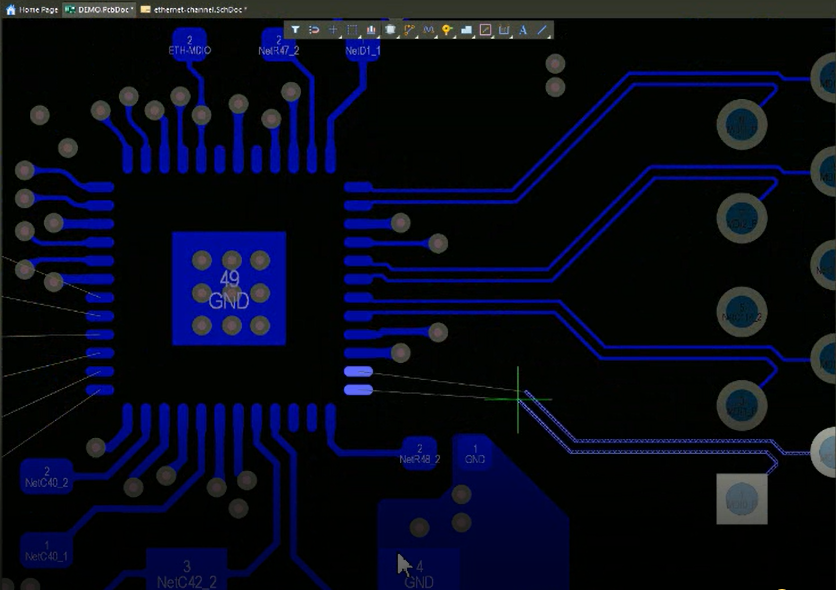

- Altium designer 20 tutorials cracked#
- Altium designer 20 tutorials upgrade#
- Altium designer 20 tutorials full#

These updates will not only allow designers to increase their design speed and task execution, but will also provide more flexibility and control, simplifying the overall design process.Ĭhange thermal connection styles for pads and vias on the fly.ĭiscover to how easily route both rigid and flex designs by following the countors of your board.
Altium designer 20 tutorials upgrade#
In addition to the easy-to-use, modernized user interface, Altium Designer will also feature a much anticipated upgrade to 64-bit architecture and multi-threading for greater stability, speed, and functionality. Leveraging feedback and suggestions from the design community, Altium Designer features capability updates and performance optimizations to significantly enhance user experience and productivity.
Altium designer 20 tutorials full#
Working with Altium Designer 20.0.10 圆4 full licenseĭescription: Altium Designer is a comprehensive design system for high-speed electronic devices based on printed circuit boards, which allows the developer to create projects, starting with the circuit diagram and VHDL-description of FPGAs, to simulate the resulting circuits and VHDL codes, prepare files for production, and the Live Design concept called live design, allows you to complete the project by debugging it on the NanoBoard.Īltium has significantly enhances user experience and productivity with a modern interface to simplify the design experience and enable unprecedented performance optimization, aided by 64-Bit architecture and multi-threading for greater stability, speed, and functionality during PCB design.Īltium Designer continues its focus on delivering new, easy-to-use and productivity enhancing PCB design tools as part of a single, unified application.
Altium designer 20 tutorials cracked#
These are the steps necessary in a typical PCB development path.Download Altium Designer 20.0.10 Build 225 圆4 full license Link download Altium Designer 20.0.10 Build 225 win64 full cracked The final step of the PCB development path is uploading files for the manufacturer to create a printed circuit board that will be used to create a finished device. After the PCB is completely designed and error-free, the documentation development stage begins including exporting the Bill Of Materials (BOM) exporting, creating assembly drawings, etc. During PCB design, all rules such as Design For Assembly (DFA), Design Rules Check (DRC), and Design For Manufacture (DFM) are checked online, all of which help decrease errors and problems. This step includes forming the board shape, creating a layer set (stackup), synchronizing with the schematic, design rules definition, components placement, routing, and much more. The next step contains all the work related to PCB design. The Electrical Rules Check (ERC) design rules will be checked several times while working on the schematic, and once completed, the project will be compiled. After the project is created, work starts on the electrical schematic design on which the components are placed and their interconnections are defined. In this guide, you will use the existing library of managed components. At this point, it is assumed that a library is created and placed in your repository. The development path of every PCB always starts with creating a new project in which the design of the schematic and board will be carried out and synchronized.

From these stages, as from the blocks, a typical design path is built. From the beginning of the project to its completion, the designer must perform many operations related to each particular stage of the development path. Altium Designer offers a complete set of tools allowing the engineer to follow the PCB development path without leaving the design environment and without resorting to third-party programs. In order to get the results closer to the ideal, the designer of the future device must make proper calculations, imagine the consequences of decisions made, compare different device configurations and, finally, make the right choice. Each new project includes a new solution, new details, and new compromises to which the engineer MUST pay attention.


 0 kommentar(er)
0 kommentar(er)
